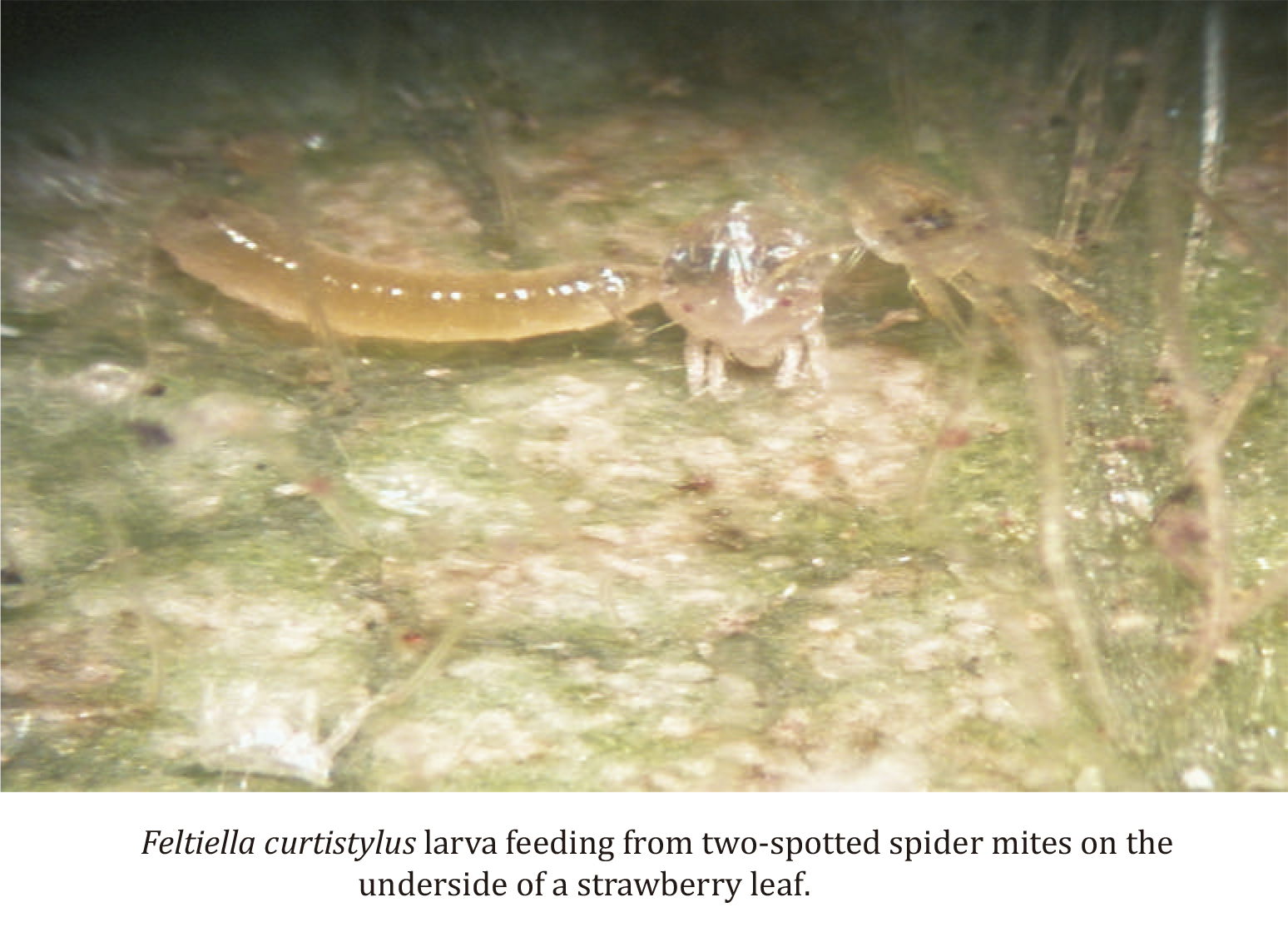First record of Feltiella curtistylus Gagné (Diptera: Cecidomyiidae) in Argentina
Keywords:
predatory gall midge, Tetranychus urticae, strawberry, biological controlAbstract

The first records of Feltiella curtistylus Gagné (Diptera: Cecidomyiidae) in Argentina are reported. Larvae from this species were captured in strawberry (Fragaria x ananassa Duch.) leaflets heavily infested with Tetranychus urticae Koch (Acari: Tetranichidae) in Famaillá, province of Tucumán, Argentina (27º03’S, 65º25’W). In 2015 (June, September and October), 16 larvae were collected; in 2016 (October, November and December), 23 larvae; and in 2017 (September, October and November), 49 larvae. Since F. curtistylus was found associated to a mite of agricultural importance in strawberry crops, this predatory gall midge has a potential for being considered a biological control agent.
Highlights
- Feltiella curtistylus Gagné (Diptera: Cecidomyiidae) larvae are mite predators in Brazil and the USA.
- During 3 years, in Tucumán, Argentina, Diptera larvae were observed feeding on eggs, protonymphal and adult stages of two-spotted spider mite, in strawberry leaves heavily infested with.
- Leaflets with larvae were placed in Petri dishes with the bottom covered with smooth plaster base, and kept humid until adults emerged.
- Adult specimens (males and females) were identified by Dr. Raymond Gagné, as Feltiella curtistylus, first record for Argentina.
- Due to prey specificity, this predatory gall midge has a potential for been considered in augmentative biological control strategies in strawberry.
Downloads

Published
How to Cite
Issue
Section
License
Aquellos autores/as que tengan publicaciones con esta revista, aceptan las Políticas Editoriales.










.jpg)




